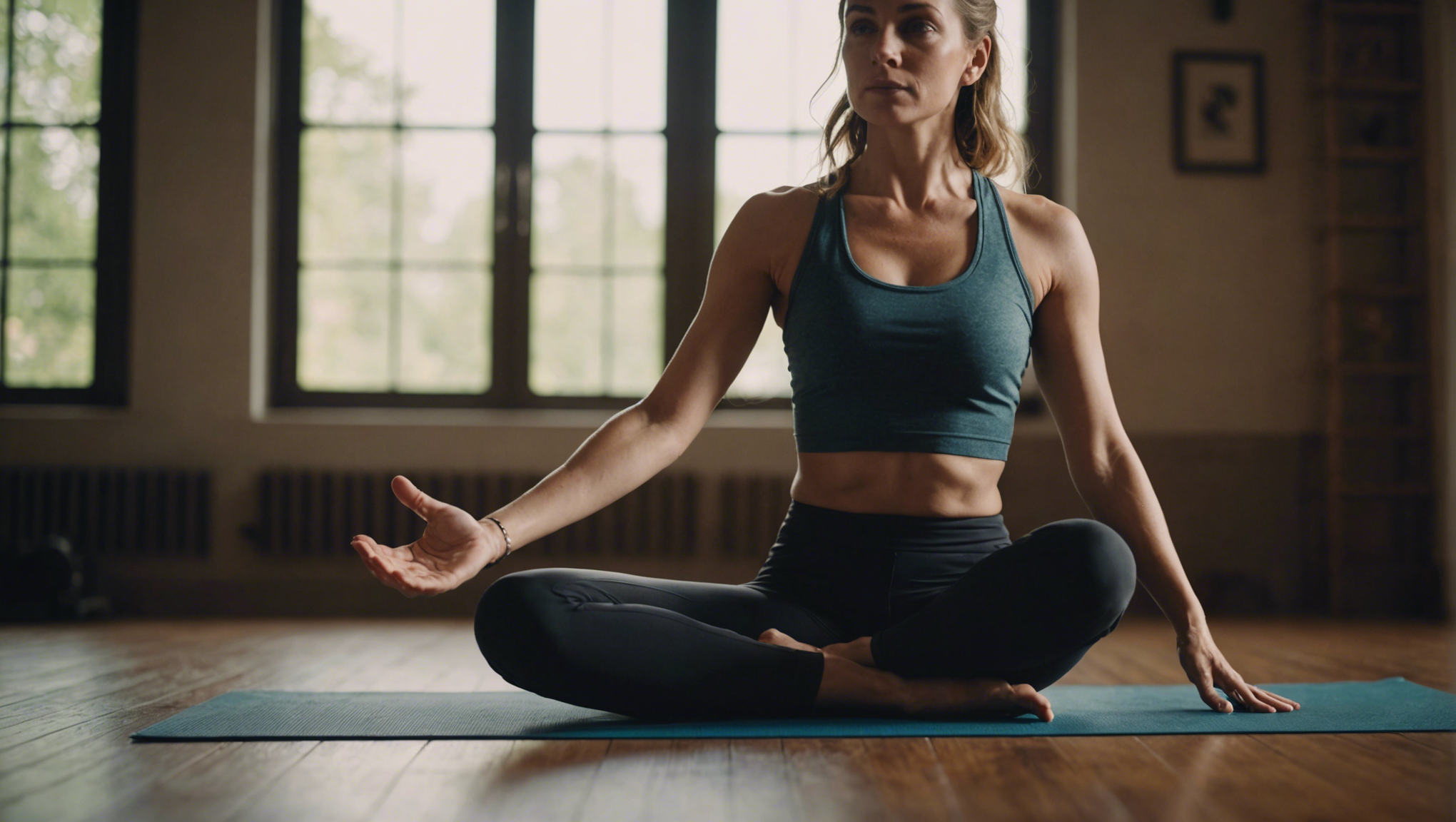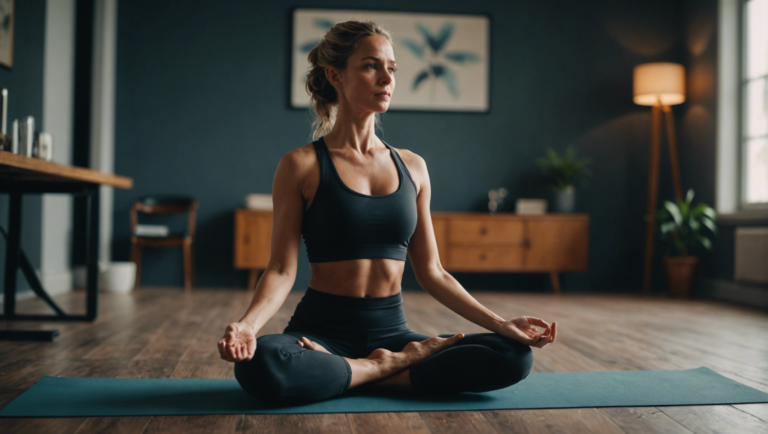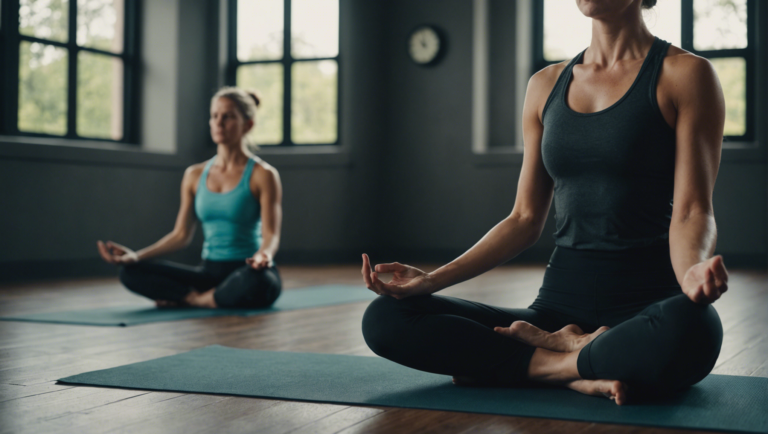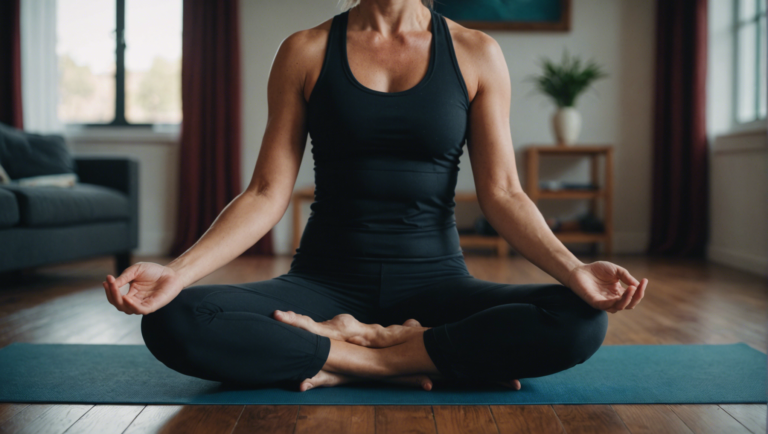Discovering The Variety: How Many Yoga Poses Are There?
Unveiling the Mystique: The Countless Poses of Yoga
The ancient practice of yoga, a deep-seated tradition originating from India, has woven its way into the fabric of global wellness and fitness cultures. At its core, yoga aims not only at physical enhancement but also at spiritual growth and mental clarity. One of the most fascinating aspects of yoga is its diverse range of poses or ‘asanas’, each designed to improve strength, flexibility, and balance, while also promoting a sense of inner peace and connection to the present. The question of how many yoga poses actually exist opens a gateway into the limitless and ever-evolving world of this discipline.
Exploring the Depths of Yoga’s Asanas
Yoga’s history stretches back over 5,000 years, evolving through the ages to encompass a variety of styles and practices. This ancient form of exercise is known for its adaptability and inclusiveness, offering something for every practitioner, regardless of age, fitness level, or experience. The richness of yoga lies not only in its physical postures but also in its philosophical teachings and breathing techniques, which together foster a holistic approach to well-being.
The count of yoga poses is a subject of much debate among scholars and practitioners. Traditional texts, such as the Hatha Yoga Pradipika, initially described around 15 poses. However, with the passage of time and the influence of various yoga masters, this number has expanded exponentially. Today, it is believed that there are thousands of variations, each adapted to meet the specific needs and objectives of practitioners.
Navigating Through the Varieties of Poses
Yoga poses range from the simple and restorative to the complex and challenging. They are categorized into several types, including standing poses, seated poses, twists, inversions, and backbends. Each category serves unique purposes in the practice of yoga, from building core strength and improving flexibility to enhancing concentration and promoting relaxation.
For beginners, foundational poses such as Tadasana (Mountain Pose), Adho Mukha Svanasana (Downward-Facing Dog), and Balasana (Child’s Pose) offer a gentle introduction to yoga. As practitioners progress, they may explore more advanced asanas like Sirsasana (Headstand), Bakasana (Crane Pose), and various dynamic sequences that challenge the body and mind.
The Infinite Journey of Discovery
The essence of yoga is not in mastering every pose, but in the journey of exploration and self-discovery each pose initiates. Yoga is a personal practice that evolves with the practitioner, adapting to their growth and changing needs over time. This dynamism is what makes the exact count of yoga poses both indefinable and infinite.
Yoga instructors and enthusiasts continually innovate and experiment, creating new poses and variations. This fluidity reflects the living nature of yoga as a practice that accommodates individuality and creativity. It is this aspect that makes yoga eternally fresh and relevant, allowing it to continually thrive and expand its global community.
Embracing Yoga’s Comprehensive Aspects
Beyond the physical poses, yoga encompasses meditation, breathing techniques (pranayama), and ethical principles (yamas and niyamas), which together guide practitioners towards a more mindful and balanced way of living. Embracing the comprehensive practice of yoga can lead to profound transformations, not only physically but also mentally and spiritually.
Yoga’s vast repository of poses is a treasure trove for those willing to delve into its depths. Each pose carries with it a history, a purpose, and a lesson, offering endless opportunities for learning and growth. Whether one is just beginning their yoga journey or is an experienced practitioner, the discovery of new poses and the exploration of their nuances can provide fresh perspectives and deepen one’s connection to the multifaceted practice of yoga.
The question of how many yoga poses there are may remain an enigma, yet it is this very mystery that captivates the hearts and minds of yoga practitioners worldwide. In the pursuit of wellness, harmony, and self-discovery, the countless poses of yoga offer an expansive path to explore, one that transcends boundaries and beckons with the promise of infinite possibilities.
The Evolution of Yoga Postures Through Centuries
Yoga, an ancient practice that has evolved over millennia, offers a fascinating insight into the human condition, culture, and spirituality. The postures, or asanas, which we associate today with yoga have undergone significant transformations, revealing much about past societies and the development of this profound discipline.
The Roots of Yoga Postures
The origin of yoga can be traced back to the Indus-Sarasvati civilization in Northern India over 5,000 years ago. Initially, the focus was primarily on spiritual growth, meditation, and the cultivation of wisdom. The physical postures that have come to define modern yoga practices were not the central component of early yoga. In ancient texts like the Vedas, Upanishads, and the Bhagavad Gita, there is more emphasis on mental and spiritual practices. Yoga was a way of life, a philosophy that extended beyond the physical realm.
Transition and Transformation
It wasn’t until the Middle Ages that yoga postures began to take on the form we recognize today. This era marked a significant shift with the development of Hatha Yoga, which emphasized the physical aspects of practice, including the postures and breath control. The Hatha Yoga Pradipika, a classical text from the 15th century, describes around 15 postures—a far cry from the thousands of variations known in the contemporary yoga landscape. This period was crucial for the evolution of yoga as it began to incorporate the body into its practices more significantly, acknowledging the interconnectedness of physical and spiritual well-being.
Global Journey of Yoga
The global journey of yoga in the 19th and 20th centuries played a pivotal role in the evolution of yoga postures. As yoga masters began to travel to the West, they introduced yoga practices to new audiences, adapting and innovating to cater to different cultural contexts and physical needs. This era also saw the blending of yoga with Western forms of physical fitness, leading to the birth of modern postural yoga.
The influential works of T. Krishnamacharya, known as the father of modern yoga, and his disciples, including B.K.S. Iyengar, Pattabhi Jois, and Indra Devi, were instrumental in shaping the way yoga is practiced today. They systematized the practice of asanas, expanded the repertoire significantly, and emphasized the health benefits of yoga, making it accessible and appealing to a global audience.
Diversity in Contemporary Practice
Today, the diversity in yoga practice is astounding. From the precision and alignment-focused Iyengar Yoga, the flowing sequences of Ashtanga Yoga, to the restorative practices of Yin Yoga, there is a style to suit every preference and need. This diversity extends to the postures themselves, with variations and modifications making yoga more inclusive and accessible than ever before.
Scientific Exploration and Future Directions
The scientific exploration of yoga practices, including postures, has expanded our understanding of its benefits and potential applications. Research has delved into the effects of yoga on physical health, mental well-being, and emotional balance, supporting its utility as a holistic practice. As we move forward, we can expect the evolution of yoga postures to continue, shaped by scientific insights, technological advancements, and the ever-changing human condition.
The evolution of yoga postures through centuries is a testament to yoga’s adaptability and enduring relevance. From its origins as a primarily spiritual and meditative practice to its current status as a global phenomenon encompassing a wide range of physical practices, yoga continues to evolve. This historical journey not only enriches our understanding of yoga but also highlights the universal search for balance, wellness, and connection in life. As we continue to explore and adapt yoga practices, we participate in an ancient, yet ever-new, tradition of self-discovery and transformation.
Decoding the Complexity: Categories of Yoga Poses
Yoga, an ancient practice with roots stretching back over 5,000 years in India, has evolved into a comprehensive discipline encompassing physical, mental, and spiritual well-being. Its adaptability and depth have led to the development of various styles and a diverse range of poses or "asanas." These asanas are designed to improve strength, flexibility, and balance, while also enhancing mental focus and relaxation. To understand the vast landscape of yoga, it’s crucial to explore the categories of yoga poses, each serving specific purposes and offering different benefits.
Exploring the Fundamentals
One of the first categories to be acquainted with includes the foundational poses. These are essential for beginners and serve as the building blocks for more advanced practices. Foundational poses focus on cultivating stability, alignment, and awareness. They lay the groundwork for a safe and effective yoga practice, ensuring that practitioners can progress safely to more challenging poses.
The Dynamics of Standing Poses
Standing poses are integral to building strength and endurance. They work on the major muscle groups, enhancing posture and balance while stimulating the cardiovascular system. Standing asanas such as the Warrior series, Triangle Pose, and Mountain Pose are pivotal for creating a sense of groundedness and stability. They are beneficial not only for beginners but also for advanced practitioners, as they can be modified to increase difficulty or focus on specific areas of the body.
The Serenity of Seated Poses
Seated poses often focus on flexibility, particularly in the hips, hamstrings, and back. They are also used to cultivate calmness and stability in preparation for meditation or deeper relaxation practices. Forward folds, twists, and lotus variations are common in this category, each offering unique benefits such as improved digestion, relief from back pain, and enhanced mental clarity.
The Challenge of Balancing Poses
Balancing poses are crucial for developing focus, concentration, and physical equilibrium. They range from simple practices like Tree Pose to more complex asanas such as Crow Pose or Handstand. These poses challenge the practitioner to maintain stability through mental and physical strength, promoting a sense of inner calm and poise that extends beyond the yoga mat.
The Power of Backbends
Backbends are exhilarating poses that open the chest, shoulders, and spine, counteracting the tendency towards forward hunching and promoting better breathing and spinal health. They can be energizing, helping to alleviate depression and fatigue by stimulating the nervous system. Backbends vary in intensity, from gentle poses like Cobra to more intense forms such as Full Wheel Pose, catering to different levels of flexibility and strength.
The Release of Forward Bends
Forward bends are characterized by a forward motion of the torso towards the legs or the ground, facilitating a deep stretch along the backside of the body. These poses are excellent for calming the mind, easing stress, and stretching the hamstrings, spine, and shoulders. They range from simple seated forward folds to more advanced poses like Standing Split.
The Integration of Twists and Inversions
Twists and inversions incorporate poses that rotate the spine or elevate the heart above the head, respectively. Twists are known for their detoxifying and rejuvenating effects, offering benefits like improved digestive health and spinal flexibility. Inversions, such as Headstand or Shoulderstand, reverse the blood flow in the body and are lauded for their ability to boost energy levels, enhance circulation, and improve mental clarity.
Understanding these categories provides a roadmap for navigating the vast landscape of yoga poses. Each category serves unique purposes, catering to different aspects of physical and mental well-being. Whether one is a beginner or an experienced practitioner, recognizing and exploring these categories can deepen the yoga practice, offering a balanced approach to health and self-discovery. As yoga continues to evolve, these categories serve as a testament to its holistic nature, providing a comprehensive toolkit for personal growth and well-being.
The Interplay Between Yoga Poses and Physical Well-being
Yoga, an ancient practice that has intertwined itself with modern wellness movements, stands as a testament to the enduring quest for physical well-being and mental serenity. The relationship between various yoga poses and one’s physical health is not merely coincidental but deeply rooted in the understanding of human anatomy and the quest for balance. This exploration dives into the rich tapestry of benefits that yoga poses offer to practitioners, shedding light on how these ancient techniques contribute to the holistic improvement of physical well-being.
Unveiling the Essence of Yoga’s Physical Benefits
Yoga transcends the boundaries of simple exercise. It is a sophisticated integration of the body, mind, and spirit, aiming for a state of equilibrium and health. Each pose, or ‘asana’, is designed to enhance physical flexibility, strength, and balance while also fostering a deeper connection with one’s internal world. The physical benefits of yoga are manifold, extending from improved cardiovascular health to enhanced muscular tone and flexibility.
Strengthening Muscles and Enhancing Flexibility
One of the most immediate benefits of consistent yoga practice is the improvement in muscle strength and flexibility. Yoga poses range from simple stretches to complex positions that challenge the body’s limits. Over time, this leads to stronger, more supple muscles that are less prone to injury. Furthermore, the focus on balanced muscle development helps in correcting postural imbalances, contributing to better overall physical alignment.
Boosting Cardiovascular Health through Yoga
The rhythmic, flowing movements of certain yoga styles, such as Vinyasa or Ashtanga, significantly contribute to cardiovascular fitness. These dynamic sequences increase the heart rate, promoting healthy blood circulation and improving oxygen supply to the body’s tissues. Additionally, the meditative aspects of yoga encourage deep, mindful breathing, which further supports heart health by reducing stress levels and lowering blood pressure.
Enhancing Joint Health and Mobility
Yoga’s gentle stretching and strengthening exercises are particularly beneficial for joint health. By moving the joints through their full range of motion, yoga helps in maintaining or increasing joint mobility and fluidity, which is crucial for preventing stiffness and arthritic conditions. The emphasis on alignment and balance also aids in distributing the body’s weight evenly, reducing unnecessary strain on specific joints.
The Role of Yoga in Stress Reduction and Mental Well-being
While the physical benefits of yoga are substantial, the practice’s impact on mental and emotional health is equally significant. The integration of breathing techniques with physical movements offers a unique approach to stress management. This combination aids in calming the mind, reducing symptoms of anxiety and depression, and promoting a sense of inner peace. The stress-reducing effects of yoga have a reciprocal relationship with physical well-being, as reduced stress levels contribute to lower blood pressure, improved digestive function, and enhanced immune system responsiveness.
Tailoring Yoga Practice to Individual Needs
The beauty of yoga lies in its adaptability and inclusiveness. With thousands of poses and variations, yoga offers something for everyone, regardless of age, fitness level, or health condition. Understanding one’s body and limitations is crucial in selecting the most beneficial poses and avoiding injury. For those with specific health concerns, such as chronic pain or limited mobility, therapeutic forms of yoga, such as Iyengar or restorative yoga, can offer tailored benefits and relief.
Yoga’s holistic approach to physical and mental well-being has solidified its place as a cornerstone in the journey towards a healthier, more balanced life. By fostering a deeper connection between body and mind, yoga poses serve as powerful tools for enhancing physical health, offering a pathway to resilience, vitality, and peace. As we delve deeper into the practice, the myriad benefits of yoga continue to unfold, embodying the profound interplay between movement, breath, and well-being.
Beyond Flexibility: The Psychological Benefits of Yoga Practice
When discussing the myriad of benefits associated with yoga, most conversations naturally gravitate towards its physical advantages, such as improved flexibility, strength, and balance. However, to look only through this lens is to miss out on a rich tapestry of psychological benefits that can have profound impacts on our mental health and emotional well-being. This article delves into the less explored, yet equally significant, psychological advantages of a consistent yoga practice.
Exploring Mental Clarity and Focus
Yoga, with its emphasis on mindful movements and breathing techniques, offers an unparalleled opportunity to cultivate mental clarity. Each pose encourages practitioners to focus on the present moment, pushing aside the cacophony of daily stressors. This practice of present-moment awareness enhances concentration and mental acuity, training the mind to remain focused and clear in both tranquil and turbulent times. The regular practice of yoga can thus become a powerful tool in enhancing cognitive functions, including memory, attention span, and decision-making skills.
Boosting Emotional Health and Resilience
The link between yoga and improved emotional health is well-documented. By fostering an inner journey towards self-awareness, yoga allows individuals to connect deeply with their emotions, offering a safe space to explore, accept, and process them. This emotional attunement can lead to a significant reduction in symptoms of anxiety, depression, and stress. Furthermore, yoga’s stress-reducing benefits are not merely anecdotal; they are supported by a growing body of scientific research indicating that regular practice can lower cortisol levels, the body’s primary stress hormone.
Enhancing Self-Esteem and Body Image
Yoga is a journey of self-discovery and acceptance, teaching us to cherish our bodies not for how they look, but for what they can do. This mindset can play a pivotal role in building positive self-esteem and a healthy body image. As practitioners progress in their practice, celebrating each milestone, no matter how small, fosters a sense of accomplishment and self-worth. This positive reinforcement helps shift the focus from external appearances to internal strength and resilience, promoting a more compassionate and accepting relationship with oneself.
Fostering Connection and Community
While yoga is inherently a personal journey, it also thrives on the sense of community and connection. Group yoga classes can provide a sense of belonging and support, offering a shared space where all are welcome regardless of age, experience, or ability. This communal aspect of yoga not only enhances the physical and mental benefits of the practice but also nurtures social connections, combating feelings of isolation and loneliness. The shared experience of growth and healing in a supportive environment can be profoundly impactful, contributing to a deeper sense of interconnectedness and empathy.
Cultivating Coping Skills for Stress Management
One of the most tangible psychological benefits of yoga lies in its ability to equip individuals with practical tools for stress management. Through the integration of breathing exercises, meditation, and physical postures, yoga teaches effective strategies for coping with stress, anxiety, and emotional turmoil. These skills, once learned, extend far beyond the yoga mat, offering invaluable resources for navigating life’s inevitable challenges with greater ease and resilience.
The psychological benefits of yoga practice are as multi-dimensional and profound as the physical ones. By engaging both the mind and body, yoga offers a holistic approach to well-being that can significantly improve mental health, emotional resilience, and overall quality of life. Whether you are drawn to yoga for its physical benefits or its mental health perks, the practice offers a wellspring of resources to support and nourish both aspects of your well-being. As more individuals discover and embrace these psychological advantages, yoga’s role as a comprehensive tool for personal development and mental health continues to expand, reflecting its potential to transform lives well beyond the mat.
Conclusion
Embarking on the journey to discover the variety within the realm of yoga unveils a mosaic of benefits, poses, and an evolutionary history that enriches both the mind and body. The exploration of the multifaceted world of yoga, from its countless poses to its profound impact on physical and psychological well-being, is more than an academic pursuit; it’s a journey into the heart of human potential and healing.
Unraveling the mysteries of yoga’s myriad postures offers a glimpse into a discipline that has, over centuries, been both a science and an art. The precise number of yoga poses, which some estimate to be in the thousands, is not just a testament to the practice’s depth but also to its adaptability and inclusivity. Each pose, or asana, serves as a key to unlocking aspects of our physical health, mental clarity, and spiritual tranquility. This rich variety ensures that yoga remains accessible and relevant, catering to the needs and capabilities of practitioners across different ages, fitness levels, and medical backgrounds.
The historical evolution of yoga postures through centuries is a narrative of human ingenuity in pursuit of harmony and enlightenment. Originating from a need to meditate for extended periods, the development of yoga postures has been influenced by the changing dynamics of human physiology, spirituality, and understanding of well-being. This evolution reflects humanity’s innate drive to reach beyond the known, to explore the limits of body and consciousness, and to create a symbiotic relationship with the universe.
Decoding the complexity of yoga poses into categories not only simplifies the practice for beginners but also highlights the comprehensive nature of yoga. Categories such as standing, seated, backbends, twists, and inversions, each offer unique benefits and challenges, acting as a roadmap for personal development and mastery. This categorization demystifies yoga, making it more approachable, and elucidates the purpose behind each posture, whether it’s to enhance flexibility, build strength, improve balance, foster concentration, or instill a sense of peace.
The interplay between yoga poses and physical well-being cannot be overstated. Yoga transcends conventional exercise by emphasizing precision, alignment, and mindfulness. This holistic approach ensures that the benefits extend beyond mere physical fitness to include injury prevention, pain reduction, and the promotion of recovery. Moreover, yoga’s emphasis on breath control and mindfulness in movement cultivates a heightened awareness of the body, encouraging healthier lifestyle choices and a proactive attitude towards maintaining physical health.
Beyond flexibility, the psychological benefits of yoga practice emerge as a cornerstone of its global appeal. In an age where mental health is increasingly recognized as vital to overall well-being, yoga offers respite and rejuvenation. Through meditation, breath work, and the deliberate focus required in holding poses, yoga serves as an effective tool in managing stress, anxiety, and depression. Its practice fosters a deeper connection between mind, body, and spirit, leading to improved mental clarity, emotional resilience, and a sense of balance in the face of life’s challenges.
As we contemplate the vast expanse of yoga, from its diverse postures to its enduring benefits, it’s clear that the practice is more than just a series of movements—it’s a pathway to holistic health and well-being. The journey into yoga is one of discovery, not just of the countless poses and their benefits, but also of our inner strengths and potential. It invites practitioners to explore the depth of their being, to cultivate balance and harmony, and to embrace a mindful approach to life.
The invitation of yoga is open to all, promising a journey filled with discovery, transformation, and enlightenment. Whether one is drawn to yoga for physical health, mental clarity, spiritual growth, or simply the allure of its ancient traditions, the practice offers a profound and enduring impact on all facets of human life. Embracing yoga in its totality—the poses, the philosophies, the breathwork—opens up a world of possibilities for personal growth and well-being. Embarking on this journey not only enriches the individual but also contributes to the collective well-being, echoing yoga’s timeless call for harmony and unity.



